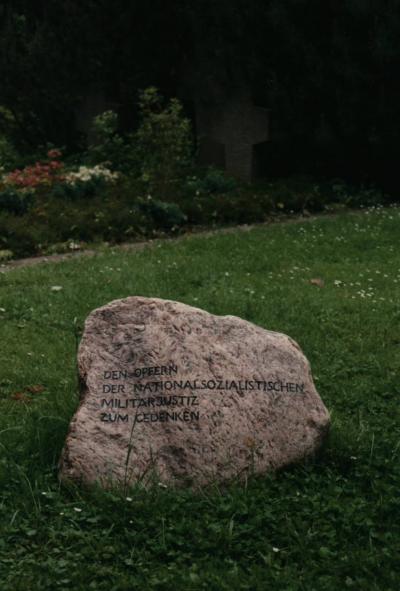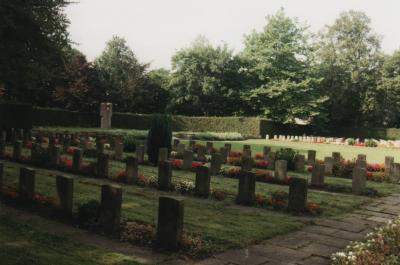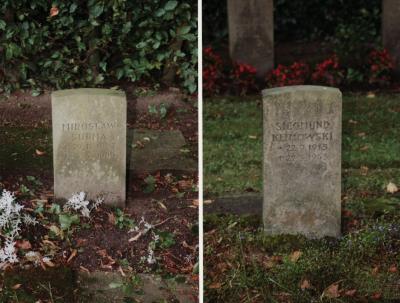Wilhelmshaven
According to official information, there are over 700 victims of World War II buried at the cemetery. Apart from the plot with concentration camp prisoners and forced labourers, at the cemetery there is also a plot with the remains of 97 Soviet prisoners of war from the "Schwarzer Weg" camp who died mainly at the end of 1941 as a result of hard labour, diseases and malnutrition, as well as 77 executed Wehrmacht soldiers and almost 300 victims of Allied Forces' bombing, probably including 2 Poles.
The "Banter Weg" camp was only created in September 1944 when the demand for cheap labour force was growing in Germany, as its war situation was abruptly getting worse. The labourers worked mainly in ordnance factories and in the German navy's shipyard or they were used to remove damages caused by more frequent and more effective air raids of Allied Forces as well as to disarm unexploded missiles, which would often end up with the prisoners' death. The camp was overpacked and nutrition and clothes were insufficient. Prisoners suffered from tuberculosis and other diseases; there were no basic medications nor health care. In addition, the prisoners had to work very hard and were treated in a brutal way by their supervisors or guards. At least 77 Frenchmen, 47 Russians and over 50 forced labourers from almost all over Europe - apart from the above-mentioned Poles - lost their lives within a few months.
At the beginning of March 1945, facing the approach of the frontline, SS ordered evacuation of the camp. First, they sent two transports with ill prisoners to the Neuengamme concentration camp; in early April another transport was launched, but after 200 kilometres of marching it turned out that the Neuengamme camp also started evacuation. The prisoners were evacuated further - first to the Sandbostel sub-camp, then to Stade and further on foot to the Łaba river, where they were put on boats and transported to Flensburg and Kiel. Then, they were put on bigger vessels and sent to the sea, where they found out that the war was over. On the 11th of May the prisoners reached the coasts of Sweden. During the so-called death marches, probably 256 prisoners lost their lives - they died of exhaustion or were killed by SS guards, Wehrmacht officers or civilians when trying to escape.
Plots with the victims of World War II are located on both sides of the Monument of the victims of the Nazi system in Wilhelmshaven. On the right-hand side of the plot there is a clearly visible symbolic tombstone with an inscription in Polish:
1939 Ś † P 1945
TRAGICZNIE ZMARŁYM POLAKOM w OBOZACH KNC.
- RODACY -
The following are the names of Poles copied from that tombstone, in alphabetical order (original spelling preserved):
BIELINSKI STEFAN
CICHY HENRYK
GÓRSKI JÓZEF
CHERYNOWSKI MARIAN
LEDZIÓN WACŁAW
LIPP JAN
LENTZ LUDWIG
MESJÓSS KUCEBIUSS
WRÓBLEWSKI CZESŁAW
KÓREN JÓZEF
MISTAK STANISŁAW
UMERA STANISŁAW
CICHOCKI WACŁAW
KULIK KAZIMIERZ
POREMBA STANISŁAW
CHŁODNY JÓZEF
KOKULSKI JAN
MORAWSKI ZDZISŁAW
NIEZGODA PIOTR
Also, two Polish-sounding names from the plot of the victims of Allied Forces' air raids (original spelling preserved):
SURMA MIROSLAW * 29.12.1887 † 3.2.1944
KLIMOWSKI SIEGMUND * 22.9.1915 † 22.3.1943



